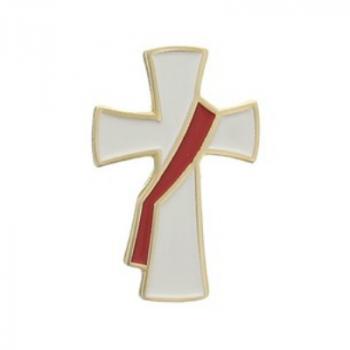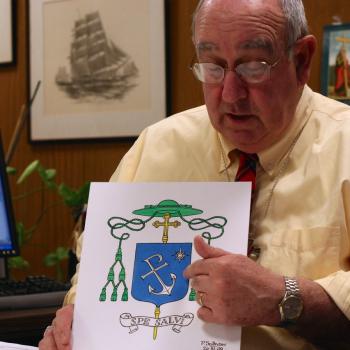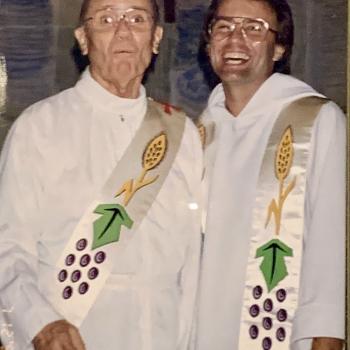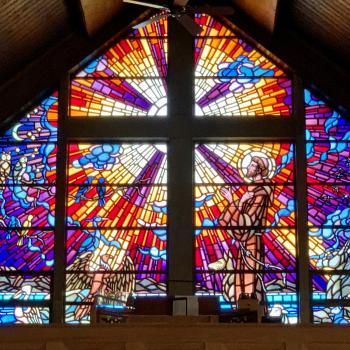In 1996, on the Feast of the Body and Blood of Jesus Christ (Corpus Christi), I was ordained to the Order of Deacon in the Catholic Church. When I lay prostrate on the floor that day in preparation for the imposition of the hands of my Bishop and the reception of the Book of the Gospels, I knew my life would never be the same. My ordination created a mark on my soul as our theology of ordination teaches. I serve as a member of the Catholic clergy in everything I do: evangelization, apologetics, and ecumenism, as well as in my professional life.
The diaconate has a rich history. During the first five centuries of Christian history, this ministry flourished everywhere. But for various reasons, the order declined in the West as a distinct rank of clerical service, and eventually disappeared. It was relegated to a transitional order given to candidates on their way to priestly ordination. In the Eastern Church, the diaconate remained a part of the permanent rank of sacred orders without interruption from the time of the Apostles until now.
The Council of Trent (1545-63) called for the restoration of the permanent diaconate for the entire Church. But it was not until the Second Vatican Council, four centuries later, that this direction was implemented. The Council Fathers explicitly stated their purpose as threefold: to enhance the Church, to strengthen with sacred orders those men already engaged in diaconal functions, and to provide assistance to areas suffering clerical shortages.
According to “The Directory for the Ministry and Life of Permanent Deacons,” issued jointly by the Congregation for Catholic Education and the Congregation for the Clergy, the deacon is “a sacred minister and member of the hierarchy.” A Deacon is ordained to the first rank of sacred orders, not to the priesthood or the episcopacy. He is no longer a layman, but a member of the clergy.
There’s much more about the history and theology of the diaconate. Read it all.
He reminded me of a homily I preached some years back on the same subject:
To be a deacon of the church is to stand on the shoulders of giants. St. Stephen. St. Lawrence. St. Francis of Assisi. Deacons who left an enduring mark on our church.
This Sunday, deacons are preaching in every corner of the world – there are 17-thousand of them in the United States alone, from every walk of life. And the diaconate continues to grow at an astonishing rate. It is truly one of the great success stories of Vatican II. But there are still a lot of misconceptions about this ministry.
One of the most common is that permanent deacons are here because of the shortage of priests that started in the ’70s.
The real genesis came much earlier, during World War II, in the German concentration camp at Dachau.
During the Third Reich over 2,000 Catholic priests were held at Dachau. One out of every 25 deaths there, in fact, was a priest.
The priest prisoners were kept in cellblock 26, known as “Der Priesterblock.” For the imprisoned priests, this experience was transformative. While in Der Priesterblock, many of them began talking about how to renew the Church when the war was over. How could the Church better serve the world? One answer, they felt, would include bringing back an ancient order of service, the diaconate.
After the camp was liberated, the priests who survived returned to a Europe in ruins – a world desperately in need of evangelization, just as in the first century. Some of the priests formed what they called Deacon Circles of clergy and laity – circles of prayer, and service and charity. By the early 1960s, some of those priests from Dachau had become bishops. They attended the Second Vatican Council. And the rest, of course, is history.
And so it was that the modern diaconate took root and grew – from seeds watered with the blood of martyrs of the 20th century, the martyrs of Dachau.
It’s one more reminder that I stand on the shoulders of giants.
Just before I was ordained, I attended a retreat given by Deacon Bill Ditewig, who told an amazing story of the sacrifice men are making in our own day to become deacons, and serve the church.
In 2000, Bill attended a meeting in Rome where deacons from around the world gave presentations about their countries. Bill spoke about the thousands of deacons in the United States and how the vocation was thriving in this country. This was greeted with some polite applause. But a few minutes later, a deacon from Hungary got up to speak. He announced, with little fanfare, that his country had 46 deacons. And the room erupted into cheers.
Bill was taken aback. He figured there must be more to the story. He tracked down a translator and sought out the deacon from Hungary.
The Hungarian deacon explained that under communism, it was illegal to hold any religious assemblies, including classes for deacons. But in the early 1980s, there were nine men who wanted to try. Nine men who wanted to be deacons. What could they do? Well, behind the scenes, an arrangement was worked out. Every month, the men secretly – and illegally — crossed the border to Austria to study for a few days, and then come back. This went on for years. Back and forth, back and forth, risking arrest and even imprisonment. Finally, these nine men were ordained in Austria, to serve back home in Hungary. Once the Iron Curtain fell, the diaconate blossomed and grew.
And it happened, in large part, because of those nine men – each, risking everything for the gospel. Each in his way, a successor to Stephen, following in the footsteps of the first martyr.
Another reminder that I stand on the shoulders of giants.
As ordination season begins, pray for all those men who are embarking on this great adventure. Pray for deacons. Pray for all men who are discerning the call. As Deacon Fournier wrote at the end of his piece:
Pray that Deacons can stand on the shoulders of the giants who have worn this stole for over two millennia. As members of the clergy called into the world, pray that we can take our place at your side – and behind the One who leads us all, Jesus Christ the High Priest, as we all continue His work in this new missionary age of His Church.
Below is a short video from Toronto’s Archbishop Thomas Collins, speaking about the diaconate a few years ago.
http://youtu.be/yk6s1OLE_DA










